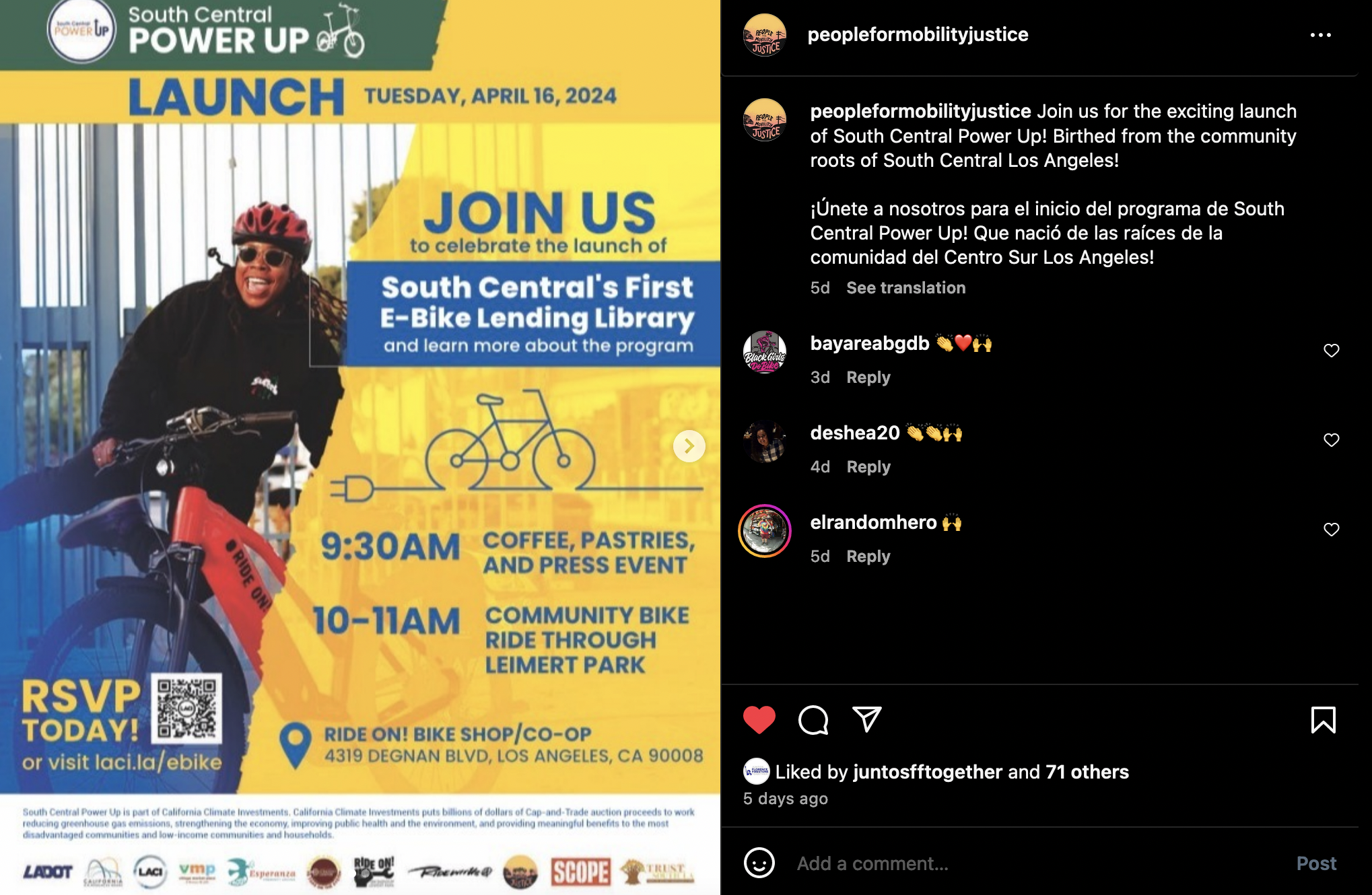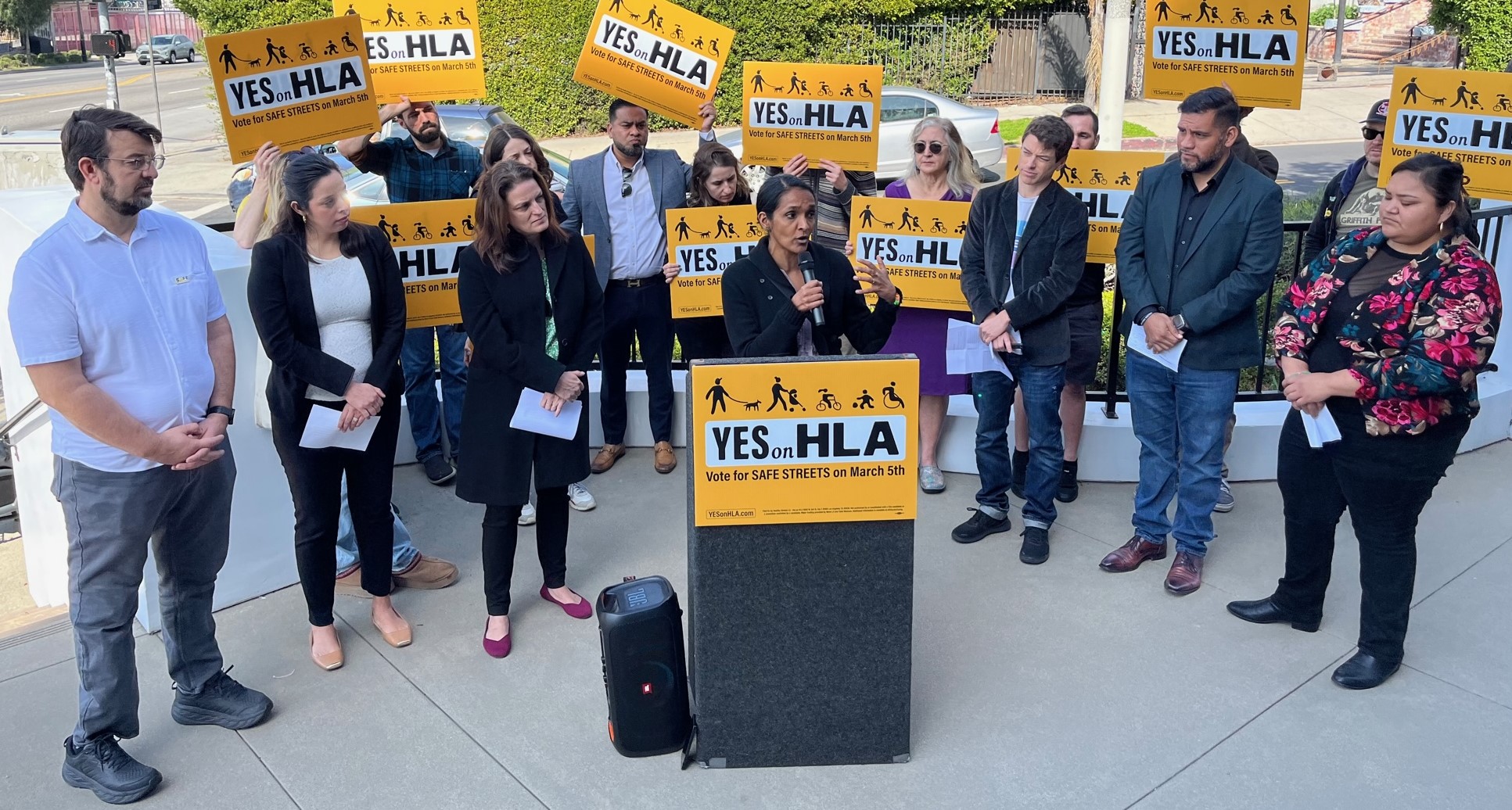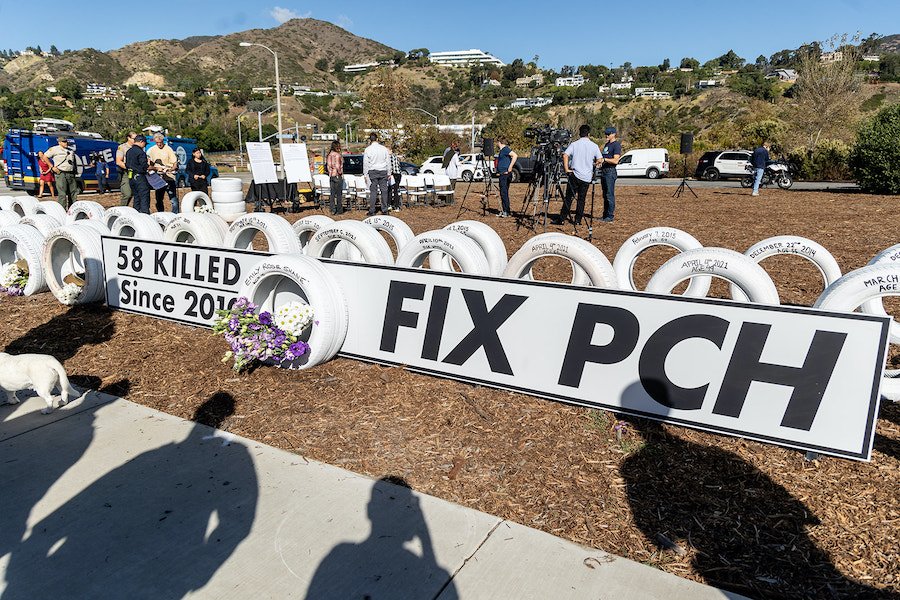A Photo Essay of a Tour of the Gold Line Foothill Extension
12:15 PM PDT on June 19, 2014
This Wednesday, Aviv Kleinman and Damien Newton of Streetsblog joined a behind-the-scenes tour of the Gold Line Foothill Extension under construction in the San Gabriel Valley. We joined Albert Ho, head of Media Relations for the Metro Gold Line Foothill Extension Construction Authority, and Jeff Rowland, the Community Relations Manager for the Kiewit-Parsons Joint Venture, the constructors of the project.
Jeff Rowland, the Community Relations Manager for the Kiewit-Parsons Joint Venture, knows just about everything there is to know about the Gold Line extension, and railroad construction in general. I made sure to pick his brain with many questions throughout the day, and he was able to answer them all with facts and figures.

It was the most comprehensive tour we could have ever imagined, and we had a long and great day on the tour. We toured the future Maintenance and Operations (M&O) facility, the flyover bridge that crosses the 210 Freeway, and many future stations and sections of track alignment. We're splitting tour coverage into four separate posts: The first about the line in general, the second about the maintenance yard, the third about the iconic bridge, and the fourth about Transit-Oriented-Development built and planned around the line.
The Metro Gold Line is a 19.7 mile light rail line running from East Los Angeles to Pasadena via Union Station in Downtown L.A. The line's first phase entered service in 2003, serving 21 stations. The line's third phase, the Foothill Extension, will extend from its current terminus in East Pasadena, at Sierra Madre Villa to Azusa, serving another 6 stations over the course of 11.3 miles. The extension will serve five cities directly, and it is proposed to transform transportation and development patterns in the San Gabriel Valley. Once bounded by the distress of being caught in freeway gridlock, San Gabriel Valley residents will now have the freedom to commute by Metro rail into Downtown LA and endless locations from there by using the new Gold Line extension.
In this first installment of the series, we explore the stations, track alignment, and construction machinery and processes. Photos and renderings will be displayed in that order.

Rowland explained that in the initial phase of the Gold Line construction between L.A. and Pasadena, Metro asked each municipality that would host a station to design their own 'personalized' station that would be an art piece portraying a theme of the municipality's choice. Art is great, but, according to Rowland, art the size of a train station is pricey. At the price tag of $25 million each, the current stations are marvelous and magnificent, but their costs were just too high for the second phase of the line.
For the current Foothill Extension phase, each station was designed with a "cookie-cutter" design, which, at only $5 million each, left a hefty budget for constructing peripherals around each station, such as large park-and-ride facilities. There is a smaller budget set aside for some personalized art pieces at each station, but the 'cookie-cutter' design was much more efficient. And, according to Streetsblog's beloved Damien Newton, "Who doesn't love cookies?"

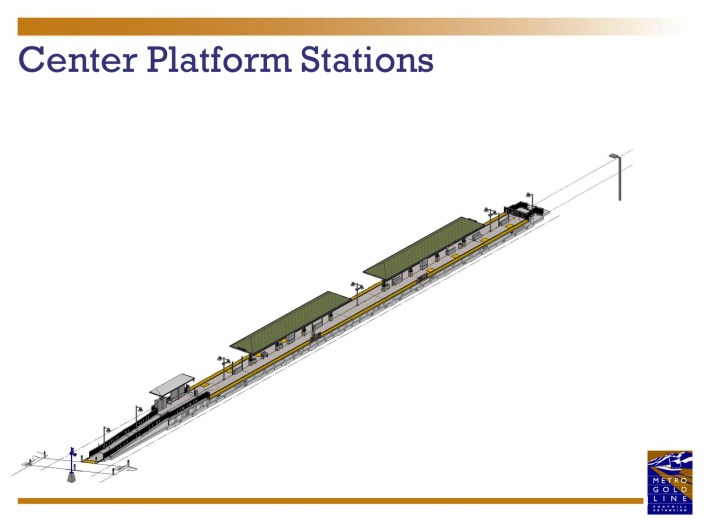
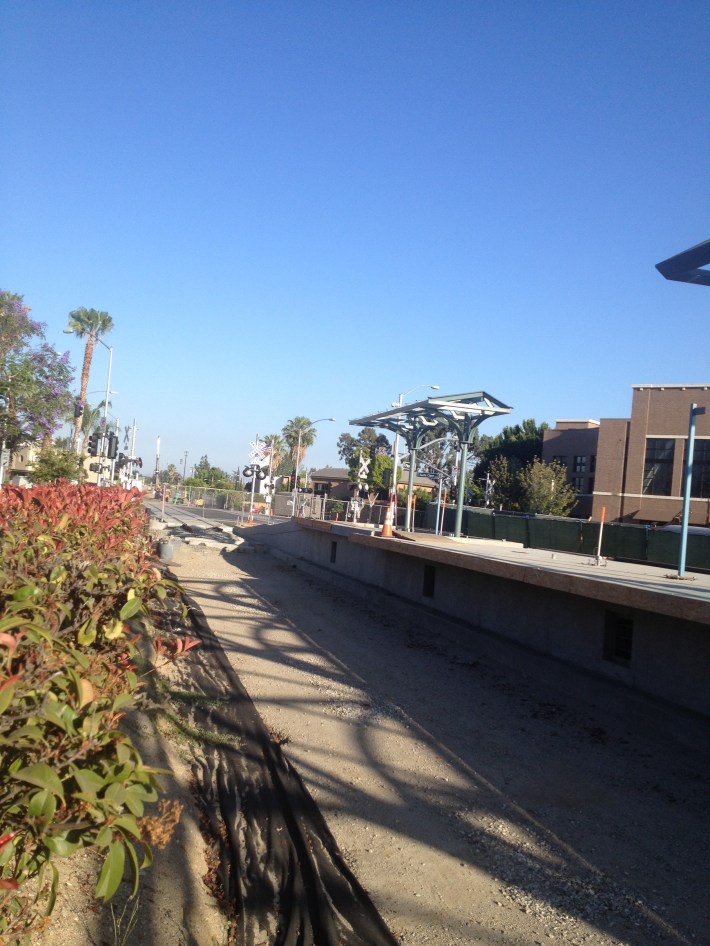
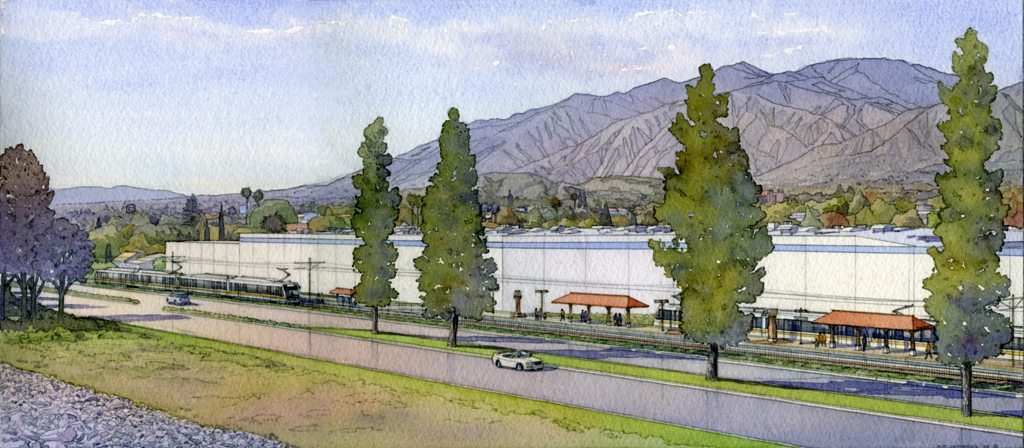

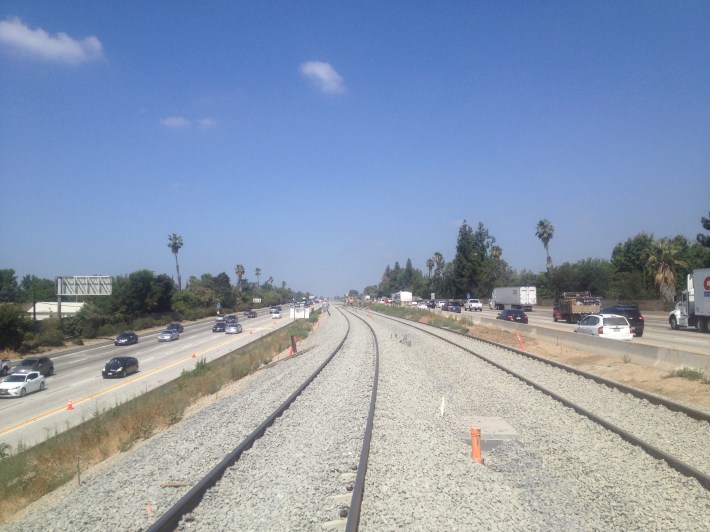
As Damien Newton wrote, "building a light rail line is hard." Jeff Rowland explained the general process in 6 parts:
- The line's alignment is planned, area zoned accordingly, and necessary properties purchased.
- The alignment's land is graded and an initial layer of Rail Ballast is laid down.
- Ties are positioned, and tracks are fastened upon them.
- Track Ballast is packed under, between, and around ties, and then shaped by a Ballast Regulator (pictured below)
- In the case of a light rail system such as the Gold Line, the catenary, or OCS (Overhead Contact system), which provides electricity to the train's pantograph, is installed above the tracks.
- Trains are delivered, the track is electrified, and commuters and pleasure-travelers alike enjoy a sustainable mode of transportation!
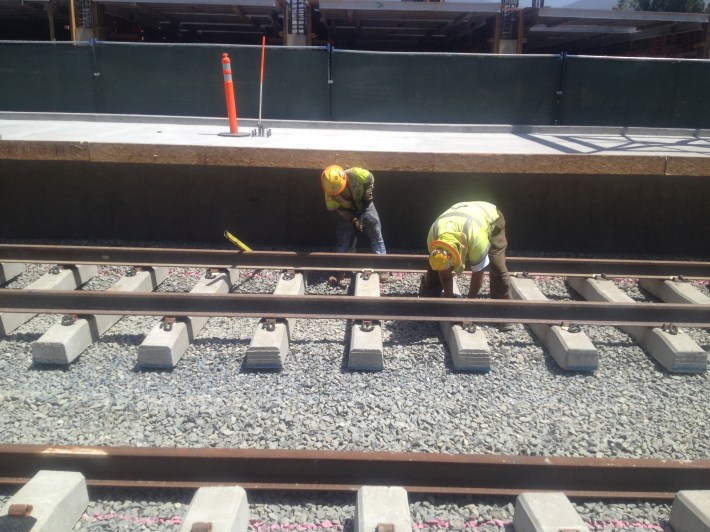

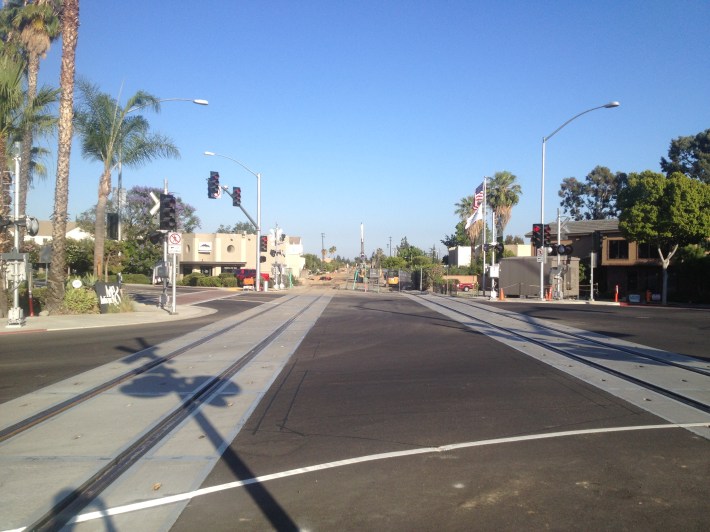

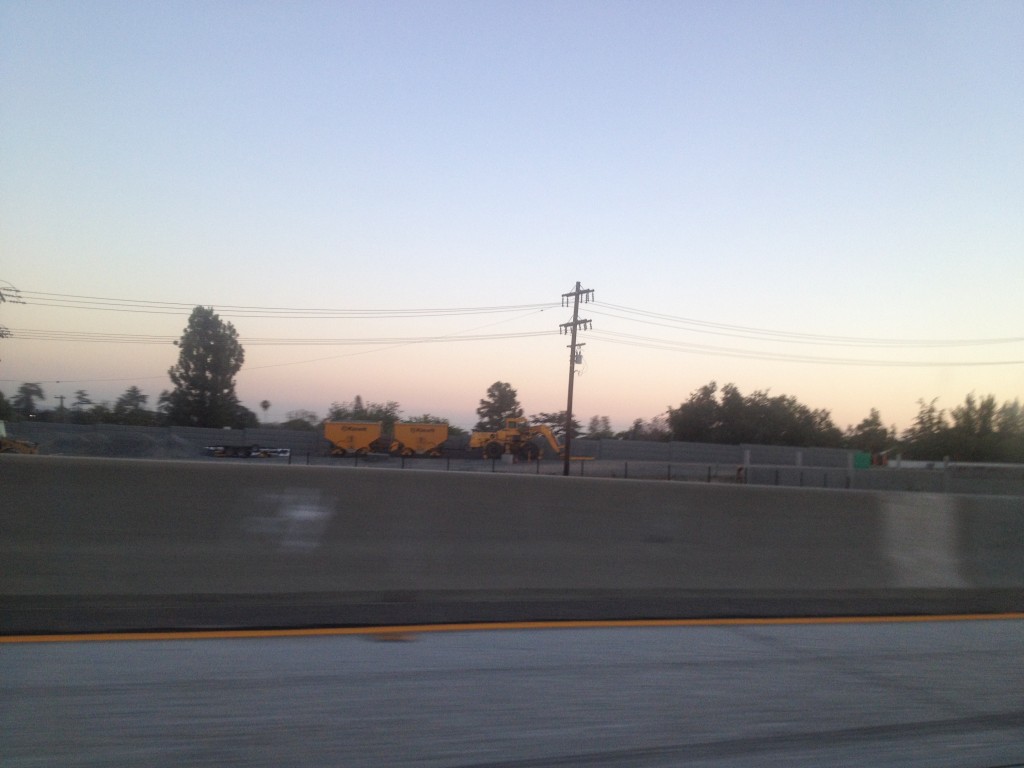
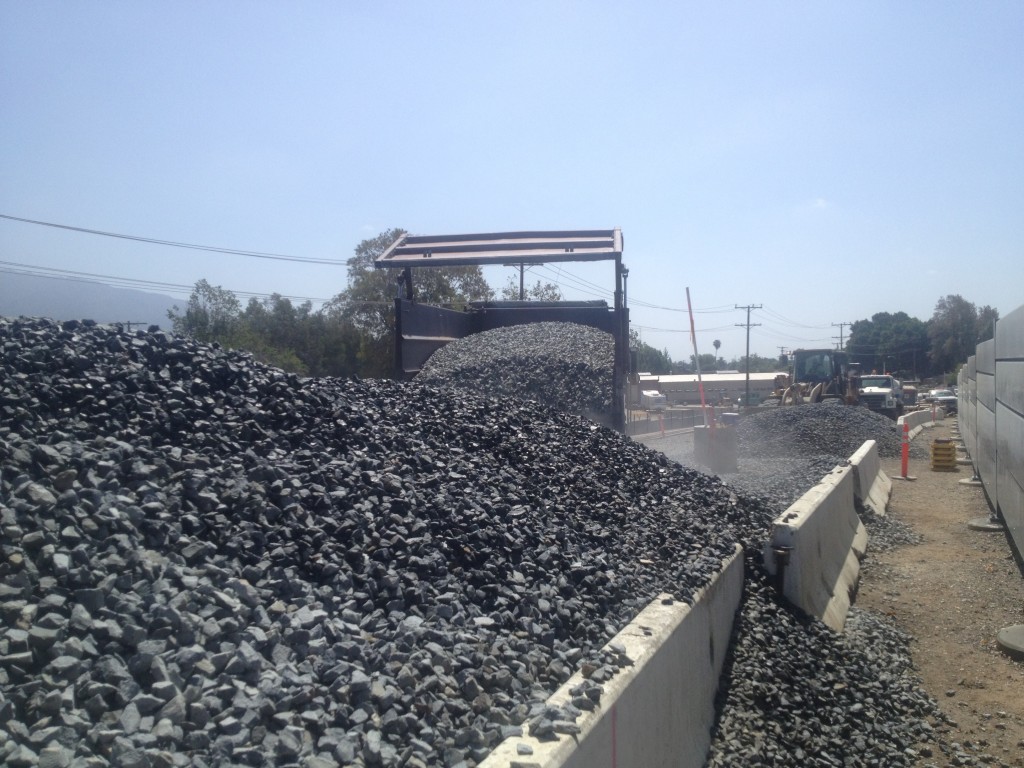
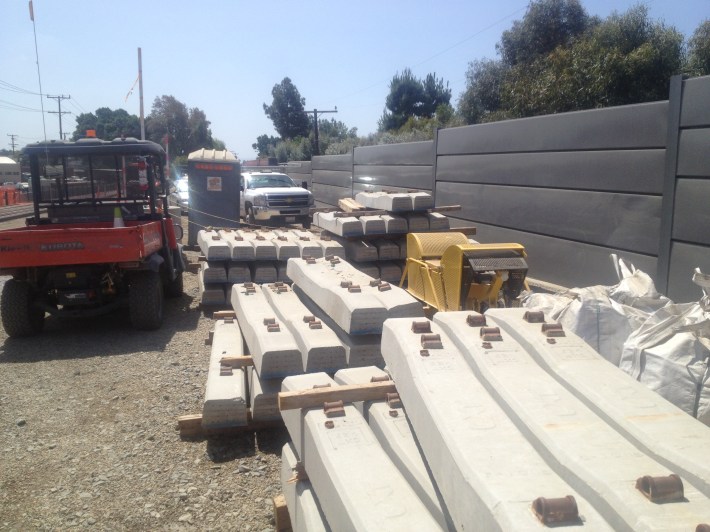

As previously mentioned, rails are delivered in 80' pieces, but are welded to form 400' sections.


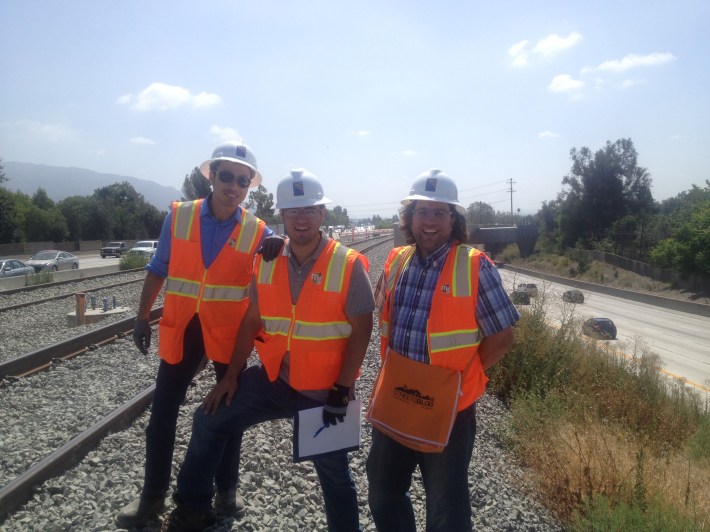
Tune in next time for a tour of the Maintenance & Operations (M&O) facility!
Stay in touch
Sign up for our free newsletter
More from Streetsblog Los Angeles
This Week In Livable Streets
CicLAvia returns to Venice Boulevard, Metro board committees, L.A. City Council Transportation Committee, Metro budget theater, and more
Measure HLA Is Now Officially Law for L.A. City
Check the city maps to find what bus, bike, and walk improvements are coming to streets in your neighborhood



